Ever wondered about the ancient gods and goddesses who held sway over the land we now call Croatia? Their tales, etched in folklore and whispers of the past, offer a glimpse into a world where nature’s forces were deified and revered.
In the ancient Croatian pantheon, Perun reigned as the thunder god, while Veles, the horned deity, held dominion over the underworld and cattle. Mokosh, a goddess of fertility and protector of women, and Svarog, the celestial blacksmith and god of fire, were also prominent figures.
These narratives not only shaped ancient Croatian beliefs but also left a profound impact on their culture, traditions, and even their understanding of the natural world.
Curious to know more? Keep reading, as we dive deeper into the captivating world of old Croatian gods and myths.
Svarog – The Supreme God
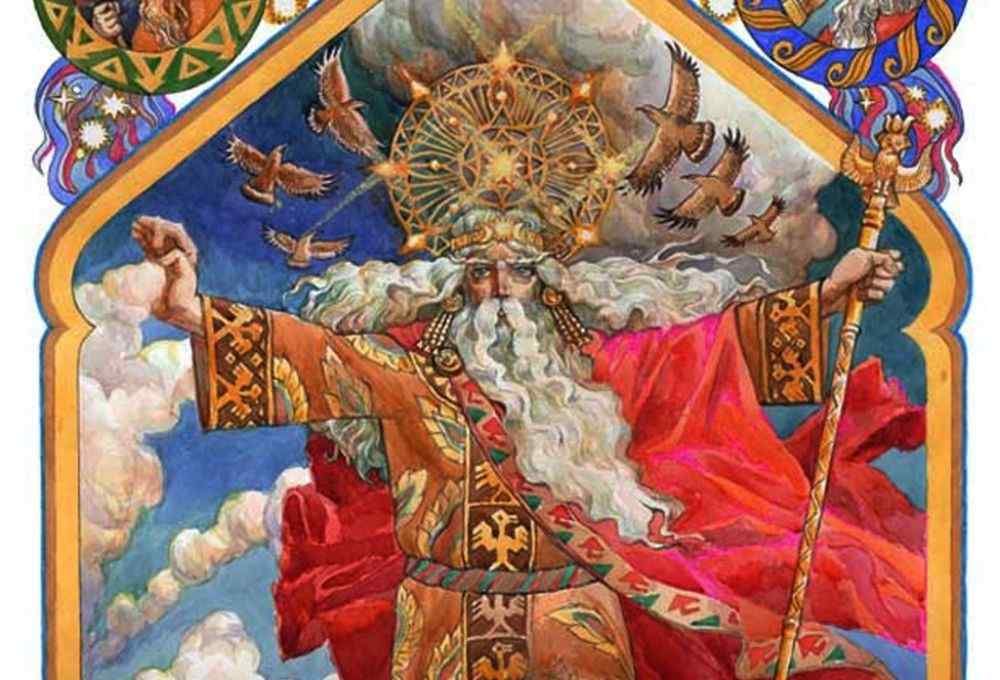
Svarog, revered as the chief deity in the ancient Slavic pantheon, embodied the sky, fire, and the art of craftsmanship.
As a celestial god, Svarog was believed to have forged the sun, an act that symbolizes his dominion over fire and the creative forces of the universe.
This creation myth highlights his role as a divine blacksmith, crafting not only celestial bodies but also the foundation of human existence.
In addition to his cosmic responsibilities, Svarog was credited with the creation of the first humans, imbuing them with life and guiding them through the complexities of civilization.
His association with craftsmanship extended beyond the celestial sphere to influence human endeavors in metalworking and other artisanal crafts, making him a patron of blacksmiths and artisans.
Worship of Svarog often involved rituals and offerings aimed at garnering his favor and protection.
Devotees would offer sacrifices, typically in the form of firewood or crafted items, to honor his creative spirit and seek his blessings.
These rituals were held to secure prosperity, good fortune, and protection from misfortune, reflecting the deep reverence and dependency ancient Slavs had on their supreme deity for the well-being of their community.
Crnobog – God of Misfortune

In stark contrast to the benevolent Svarog, Crnobog, the god of misfortune, embodied darkness, chaos, and the malevolent forces that plagued human life.
While Svarog represented light and creation, Crnobog was often invoked when calamities struck, symbolizing the inevitable balance of good and evil.
Crnobog’s presence in ancient Croatian mythology highlighted the duality of existence, reminding people that misfortune was an intrinsic part of life.
To understand Crnobog’s role, consider how communities dealt with his influence.
Rituals to appease Crnobog were common, aiming to ward off his malevolent impact. These practices often included offerings and specific chants designed to keep misfortune at bay.
| Aspect | Svarog | Crnobog |
|---|---|---|
| Representation | Light, Creation | Darkness, Misfortune |
| Role in Balance | Benevolent Force | Malevolent Force |
| Common Rituals | Celebrations, Prayers | Offerings, Chants |
While Svarog’s festivals were joyous, Crnobog’s rituals were somber, reflecting his darker nature.
People believed that acknowledging Crnobog’s power and performing these rituals could mitigate his influence, thereby maintaining harmony between the forces of light and darkness.
This intricate belief system underscored the ancient Croatians’ understanding of a balanced universe.
Morana – Slavic Goddess of Winter

Among the pantheon of ancient Croatian deities, Morana stands out as the powerful Slavic goddess of winter, embodying death and the cyclical nature of life.
As the harbinger of the cold season, Morana is often depicted with symbols of withered vegetation and freezing temperatures.
Her presence signals the end of the fertile period and the onset of hardships, a reminder of the inevitable cycle of life and death.
Morana’s influence extends beyond the physical realm, as she is also a prominent figure in numerous rituals and myths.
Winter solstice celebrations often include traditions aimed at driving away the harshness of winter, such as the burning of effigies representing Morana. These rituals symbolize the community’s desire to overcome the cold and look forward to the rebirth of spring.
- Symbolism: Morana is associated with withered plants and the biting cold, representing death and dormancy.
- Rituals: Effigy burning during winter solstice to mark the end of winter’s hardships.
- Mythical Conflicts: Stories often depict her battling Vesna, the goddess of spring, embodying the struggle between winter and spring.
- Cultural Impact: Morana’s myths highlight the importance of understanding and respecting nature’s cycles.
Understanding Morana’s role in Croatian mythology offers valuable insights into how ancient cultures perceived and interacted with the natural world.
Svantevid – The Bearer of Light
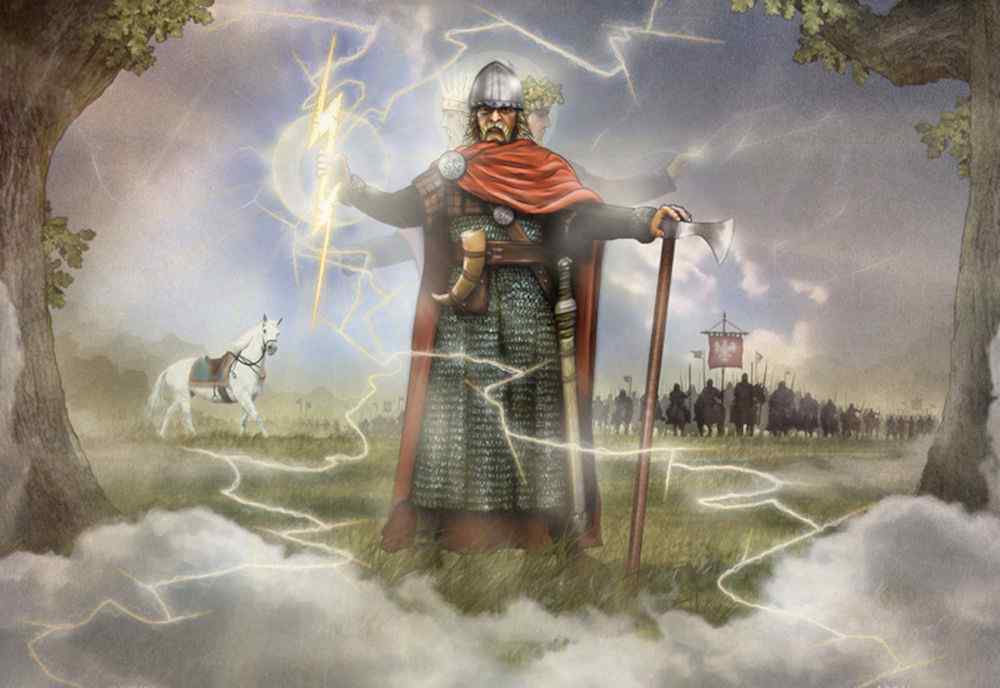
As the harshness of winter gives way to the promise of light and renewal, Svantevid emerges as a paramount figure in ancient Croatian mythology, embodying the essence of the sun and divine foresight.
Revered for his multifaceted nature, Svantevid is often depicted with four heads, each facing a different cardinal direction.
This unique feature symbolizes his omniscience and ability to see all aspects of the land simultaneously, ensuring that no corner of the realm escapes his gaze.
Svantevid’s association with light and the sun positions him as a harbinger of hope and a herald of longer, warmer days.
His role extended beyond mere illumination; he was also a deity of fertility and warfare, believed to guide warriors in battle with his strategic insight.
Temples and shrines dedicated to Svantevid were scattered across ancient Croatian territories, serving as places of worship and divination where followers sought his guidance.
In pre-Christian Slavic religion, Svantevid’s influence was profound, reflecting the deep connection between natural cycles and divine will.
His presence in mythology underscores the importance of light, both literal and metaphorical, in the lives of ancient Croatians.
Vesna – The Goddess of Spring
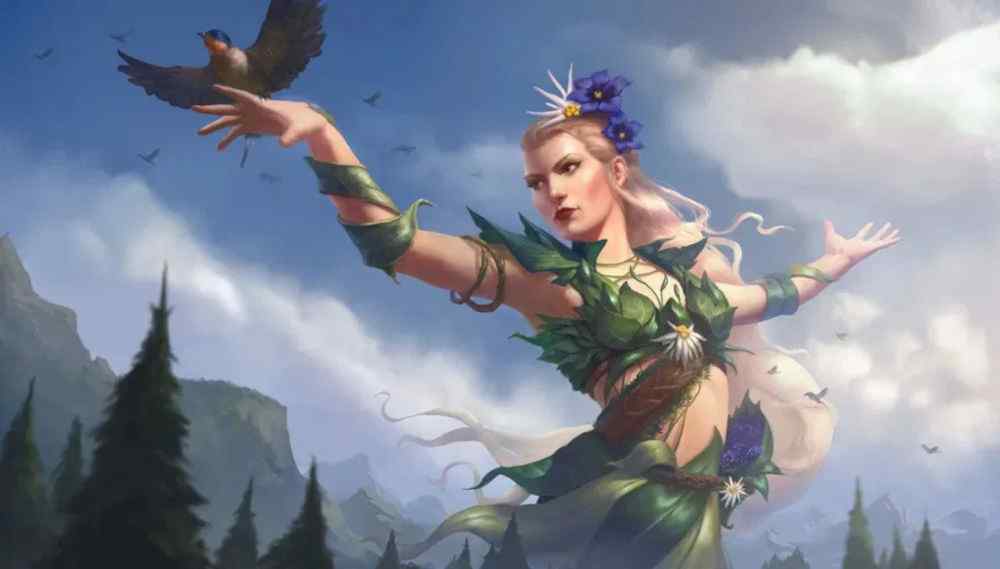
Vesna, the revered Goddess of Spring, symbolizes the rejuvenation of life and the cyclical renewal of nature.
In ancient Croatian mythology, Vesna’s presence marked the end of winter’s harsh grip and the beginning of a season filled with growth and fertility.
Her essence is intertwined with blooming flowers, budding trees, and the birth of young animals, all of which signify the return of vitality to the earth.
To honor Vesna, Croatians celebrated her arrival with various rituals and festivals, most notably around the spring equinox.
These festivities included singing, dancing, and the adorning of homes with fresh flowers, signifying the banishment of winter and the welcoming of spring’s warmth.
Her role in the agricultural cycle was crucial, as farmers sought her favor to ensure bountiful harvests. Offerings of seeds and young plants were made to invoke her blessings, reflecting the deep bond between the people and the natural world they depended upon.
- Symbols of Vesna: Flowers, young animals, and budding trees.
- Celebrations: Spring equinox festivals with singing, dancing, and floral decorations.
- Agricultural Significance: Prayers and offerings for bountiful harvests.
- Cultural Impact: Marking the transition from winter to spring.
Perun – God of Thunder
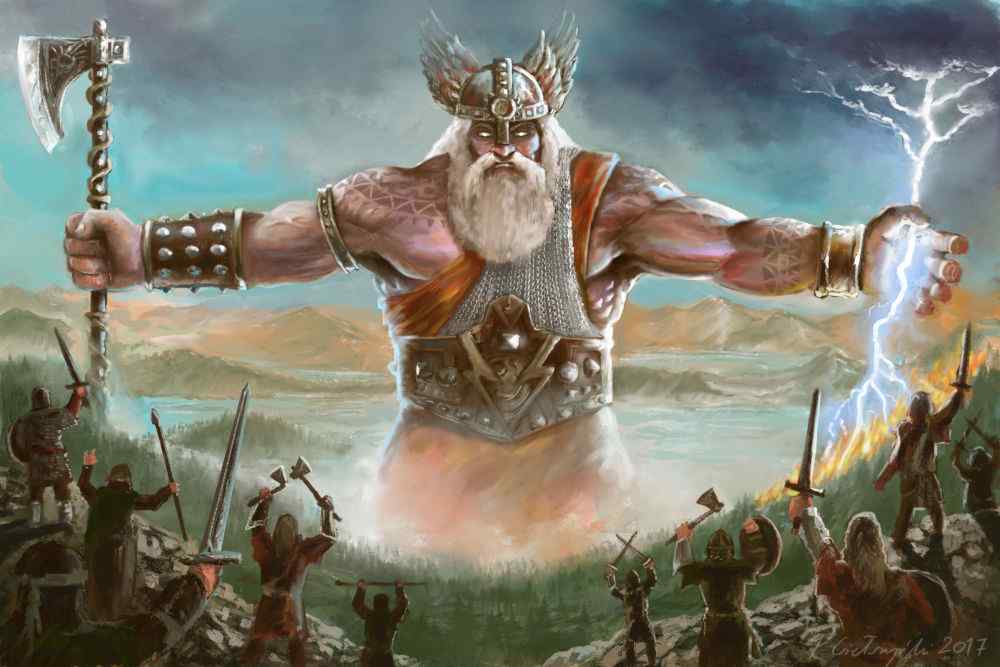
Following the rejuvenating presence of Vesna, Perun emerges as the powerful God of Thunder, wielding his thunderbolt and axe to command storms and lightning.
As one of the most potent deities in ancient Croatian mythology, Perun’s influence extends beyond mere weather control; he symbolizes strength and protection.
Perun’s thunderbolt and axe are not just weapons but extensions of his might, capable of splitting the skies and striking down his foes.
His association with oak trees further cements his status as a force of nature, as these trees were considered sacred and often served as sites for his worship.
The oak’s durability and strength mirror Perun’s own indomitable spirit.
As a protector and warrior god, Perun was revered by those seeking courage in battle and safety in their daily lives.
Rituals and sacrifices were regularly performed to honor him, typically involving the offering of livestock or grain.
Such acts were believed to curry his favor, ensuring protection against natural disasters and enemies.
In essence, Perun’s legacy as the God of Thunder underscores the ancient Croatians’ reverence for the natural elements and their desire for divine guardianship.
Stribog – God of the Wind
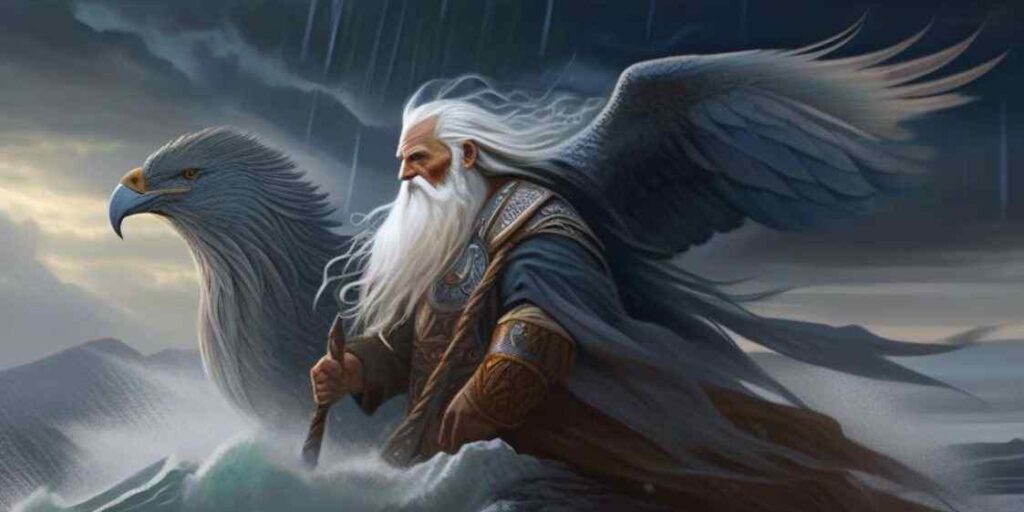
In ancient Croatian mythology, Stribog is revered as the God of the Wind, controlling not only the currents of the air but also influencing weather patterns and the success of the hunt.
This deity is often depicted with symbols such as birds and arrows, representing his swift and far-reaching influence.
Stribog’s control over the wind was believed to affect daily life profoundly, dictating the weather and consequently the well-being of crops, sailing conditions, and even the outcome of hunts.
Worshippers of Stribog would perform rituals to appeal to his favor, especially in times of need. For example, offerings were made to secure fair weather for travel or to bring favorable winds for successful hunting expeditions.
The importance of wind in ancient Croatian society cannot be overstated, as it played a pivotal role in agriculture and navigation, both of which were essential for survival.
- Symbolism: Birds and arrows are key symbols associated with Stribog.
- Influence: He was believed to control weather patterns and hunting success.
- Rituals: Offerings and prayers were made to gain his favor.
- Daily Impact: Affected agriculture, sailing, and general survival.
Understanding Stribog’s significance provides deeper insight into ancient Croatian life and their connection to natural forces.
Berstuk – Forest God
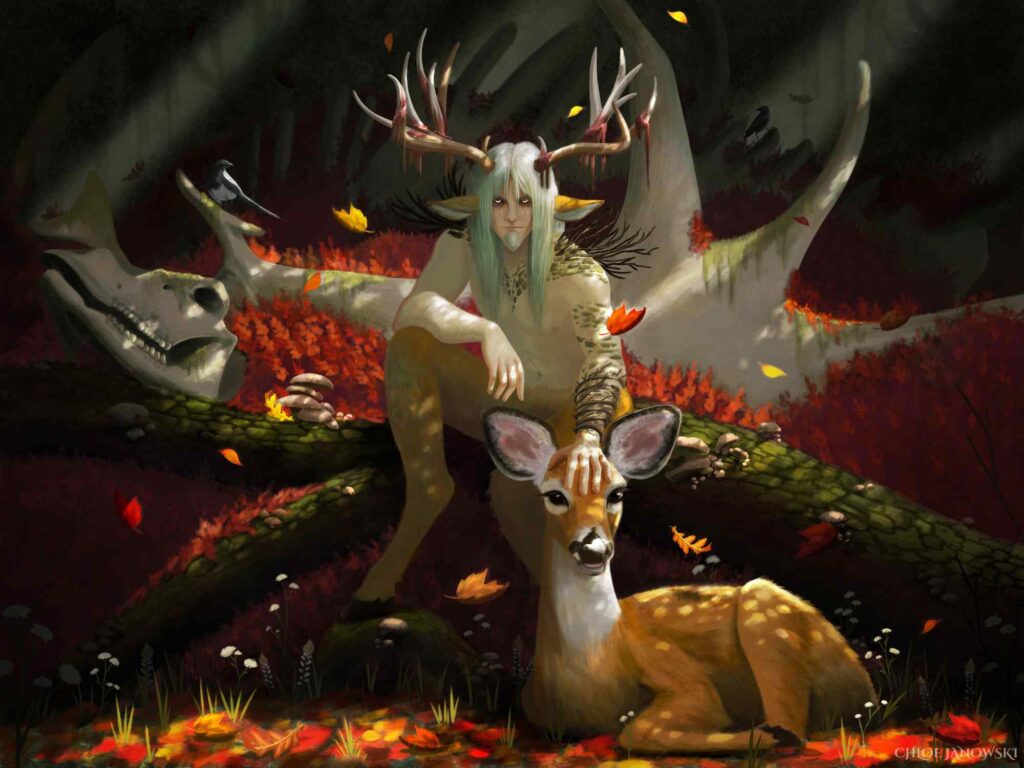
Berstuk, revered as the Forest God in ancient Croatian mythology, embodies the spirit of the untamed wilderness and is deeply connected to the forests and wild animals.
As a protector of the forest, Berstuk was believed to watch over every tree, plant, and creature within his domain.
His presence was thought to maintain the balance and harmony of nature, safeguarding it from human encroachment and other threats.
In ancient times, people would offer rituals and sacrifices to Berstuk to gain his favor and protection. These offerings often included fruits, nuts, and small tokens of respect left at the base of grand trees or at forest shrines.
Such rituals were believed to appease the forest spirits and secure a bountiful hunt or a safe passage through the woods.
Folklore is rich with tales of encounters with Berstuk. It was said that those who respected the forest and its inhabitants might be granted safe passage or even rewarded with hidden treasures.
Those who showed disrespect or caused harm often faced his wrath, with stories of getting lost or experiencing mysterious misfortunes in the dense, shadowy woods.
Triglav – God of Vigilence
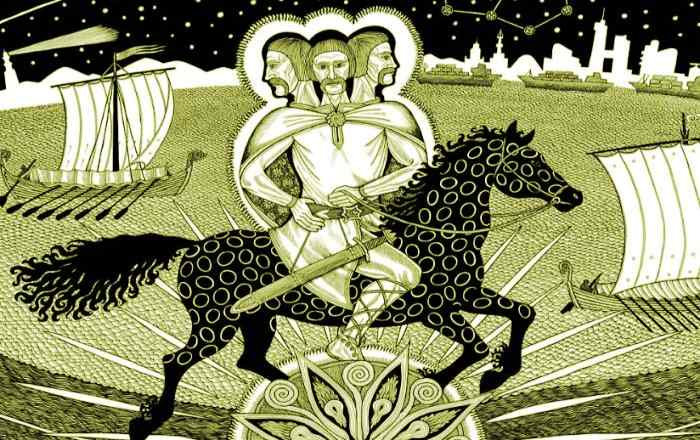
Triglav, the three-headed god of vigilance in ancient Croatian mythology, is revered for his multifaceted guardianship, symbolizing the interconnected domains of earth, sky, and the underworld.
Each of Triglav’s heads is believed to oversee one of these domains, emphasizing his holistic protective role in the mythology.
This unique characteristic underscores his vigilance and the all-encompassing approach to his guardianship.
As a guardian deity, Triglav was seen as a protector of boundaries and a preserver of balance among the domains.
His association with mountains or high places is particularly notable, as these locations were often considered closer to the divine and ideal for worship.
The high peaks symbolized his exalted status and extensive watch over the universe.
Worship practices dedicated to Triglav included rituals performed at mountain summits and sacred groves.
Offerings and prayers were made to seek his protection and maintain harmony among the natural and spiritual universes.
His worship was deeply rooted in the belief that maintaining balance across the three domains was vital for the well-being of both people and nature.
- Three heads symbolize earth, sky, underworld.
- Guardian of boundaries and balance.
- Associated with mountains and high places.
- Rituals include offerings and prayers at summits.
Svetovid – God of War
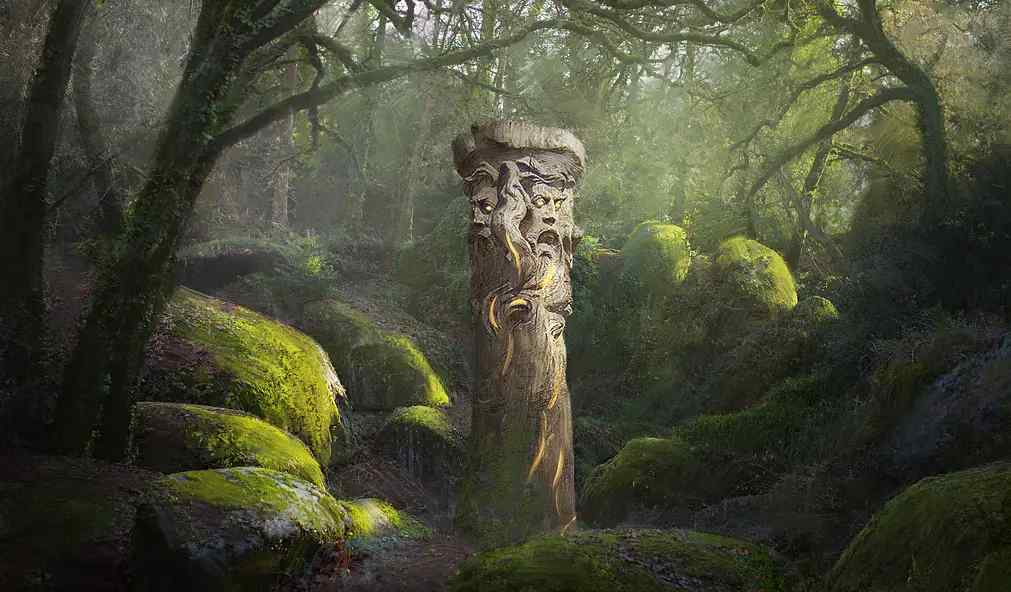
Among the pantheon of ancient Croatian deities, Svetovid stands out as the powerful god of war, whose influence extended beyond the battlefield to encompass notions of victory and fertility.
Revered for his prowess in war, Svetovid was often depicted wielding a sword and riding a majestic horse, symbolizing his supreme command and readiness for battle.
His presence was believed to ensure triumph and protection for those who honored him.
Rituals dedicated to Svetovid were elaborate, often involving sacrifices and offerings, especially before significant battles.
Warriors would present food, drink, and occasionally, animal sacrifices, seeking his favor and blessings for success.
These ceremonies were not just about war; they also aimed to secure the prosperity and fertility of the land, reflecting Svetovid’s broader protective role.
In Slavic society, Svetovid’s influence permeated various aspects of life. He was not only a beacon of martial strength but also a symbol of hope and renewal.
Festivals in his honor were filled with fervor and anticipation, blending communal celebrations with solemn invocations.
Svetovid epitomized the duality of destruction and creation, embodying the delicate balance that ancient Croatians sought to maintain in their world.
Dažbog – God of the Sun
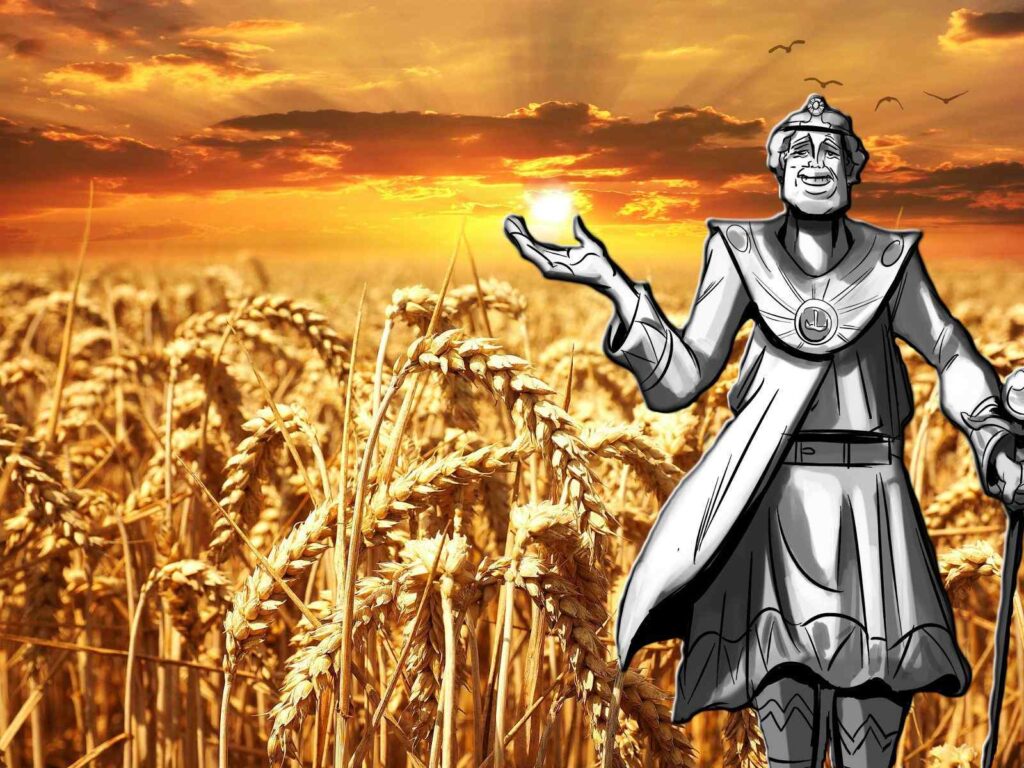
Following the creative influence of Rod, Dažbog, the radiant God of the Sun, was a prominent deity in ancient Croatian mythology, symbolizing warmth, prosperity, and the life-giving force of the sun.
Represented by a solar disk and often depicted riding a chariot, Dažbog was believed to journey across the sky daily, bringing light and energy to the universe.
His presence was essential to the agricultural cycle, ensuring the growth of crops and the sustenance of life.
In daily life, Dažbog’s influence was seen as essential for well-being and prosperity. Farmers would often pray to him for favorable weather and bountiful harvests, recognizing his power over the sun’s nourishing rays.
Celebrations dedicated to Dažbog included rituals performed during solstices and equinoxes, where communities would gather to honor his contributions to their survival and success.
Dažbog’s key attributes are:
| Attribute | Symbol | Role in Daily Life |
|---|---|---|
| Sun Symbolism | Solar Disk | Life-giving energy |
| Representation | Chariot | Journey across the sky |
| Agricultural Role | Crop Growth | Ensuring bountiful harvests |
| Celebrations | Solstices/Equinox | Community rituals and prayers for prosperity |


